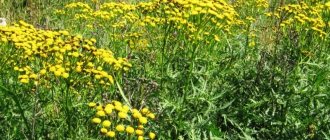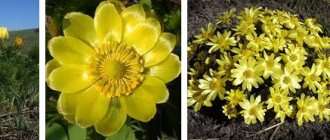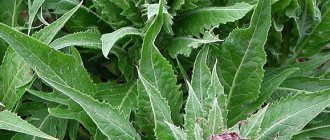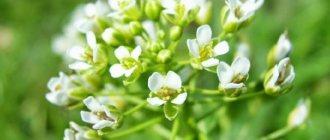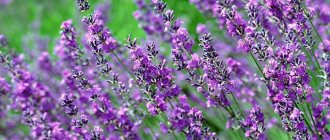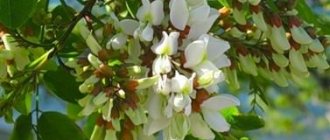Common tansy (button grass, field ash, helminthe) is a herbaceous perennial from the Asteraceae family. It is considered a moderately poisonous crop and is found everywhere in nature during the warm season. The plant is recognizable by two key features: yellow flowers that resemble small buttons located on the inflorescence like rowan berries, and a special, tart smell that remains on the skin of the hands as soon as you touch the plant.
The name comes from the Greek words for “long” and “to exist.” These words most clearly characterize one of the main properties of the plant to maintain a fresh, juicy appearance for a long time. The unusual tart smell, which is emitted by all above-ground parts of the plant, perfectly repels insects. Therefore, tansy is planted in vegetable gardens and orchards as a hedge that repels pests. Tansy bouquets are good at repelling flies, midges and mosquitoes.
In the wild, the plant can be found throughout Russia, as well as Belarus, Ukraine, and Crimea. In the conditions of the Far North, culture does not survive. It is not picky about the soil and growing conditions, but with a lack of nutrition and sun it grows no more than 30-40 cm in height. Grows well in fields, on the edges of forests, along roads.
The powerful healing properties of the tansy plant have been known to mankind for a very long time. Tansy has both medicinal properties and contraindications, so the approach to treatment should be competent and reasonable, without any “it won’t be superfluous” or “just in case.”
Morphological description
The plant can reach a height of up to one and a half meters. The roots are thin, fibrous. There is a woody creeping rhizome. The stems are most often straight, bare or slightly pubescent, numerous, branched at the top. The leaves are up to 10 cm wide and 7 to 20 cm long, double-pinnate, alternate, dark green above, lighter below. The upper leaves sit on the stem, have numerous pinpoint glands, and the lower ones have a long petiole.
Blooms from July to October. Tansy flowers are round, tubular, small (5-8 mm), collected in corymbose inflorescences of bright yellow color. The baskets are located at the tops of the stems. In August-October, in place of flowers, fruits of 1.2-1.8 mm are formed, which are oblong-shaped achenes with a short, jagged crown. Propagated by both seeds and vegetative parts.
Tansy recipes against parasites
Tansy is a highly effective remedy against various parasites, including pinworms. To prepare an enema to combat these organisms, you need to prepare the following components:
- Seeds - 1 tbsp. l.
- Garlic - 2 cloves.
- Milk - 0.5 l.
The milk needs to be heated and the seeds ground into powder. You should also finely chop the garlic and combine all the ingredients. The liquid is cooled and filtered, and then injected into the anus.
tansy products have an antiparasitic effect and are used in the form of enemas and for oral administration
To get rid of Giardia, you can prepare 20 g of inflorescences, pour boiling water over them and boil for 1 hour. The drink should be consumed 0.5 cups before meals 3 times a day.
To combat roundworms, inflorescences are poured with boiling water and infused for 4 hours. After filtering, the product is taken 1 tbsp. l. 4 times a day.
When fighting bovine tapeworms, tapeworms or other tapeworms, a folk remedy called “Russian triad” is used. It consists of tansy, wormwood and cloves.
Tansy for prevention
Due to its special composition, the plant can be used as a powerful prophylactic against helminths. In order to prevent the appearance of parasites, it is necessary to drink a herbal drink 1-2 times a day 30 minutes before meals in the morning and evening.
Collection and preparation of plants
Medicinal raw materials are the well-known flower baskets and parts of the inflorescence with a stem no more than 4 cm. You can buy them at the pharmacy, but it is better to prepare them yourself.
Plants that grow away from roads are suitable for harvesting. They are harvested from June to September, tearing them off by hand or cutting off the baskets with flower stalks with scissors.
Dry the raw materials in the classical way, in ventilated rooms, spreading them in a thin layer on clean paper. You can also dry it in the fresh air under a canopy, excluding direct sunlight. In bad weather, you can dry it in dryers at T 40 C.
The raw materials should not be overdried - this can lead to the flowers falling off. After drying, carefully cut off the browned stems and baskets, and put the raw materials in paper bags for storage. Shelf life – up to 3 years.
Medicinal properties
For medicinal purposes, yellow button flowers are usually used. But the entire above-ground part of the plant can also be used.
Flowers contain:
- organic acids (tanacetic acid, gallic acid, etc.);
- tannins;
- natural sugars;
- essential and fatty oils;
- tanacetin, which gives the plant bitterness;
- other elements.
Yellow baskets have the property of increasing appetite, stimulating the production of digestive juices in the gastrointestinal tract, toning the intestinal muscle tissue, facilitating and increasing the secretion of bile, slowing the heart rate and increasing blood pressure.
The herbal part of the plant has the following properties:
- antipyretic;
- anti-inflammatory;
- pain reliever;
- antimicrobial;
- wound healing;
- anthelmintic;
- insecticidal;
- antispasmodic.
Tansy flowers are most often used, although the leaves of the plant contain quite a lot of ascorbic acid.
We recommend reading: Aloe with honey - medicinal properties and contraindications
Beneficial effect on the body
Tansy is characterized by the following beneficial actions:
- pain reliever;
- choleretic;
- diaphoretic;
- diuretic;
- strengthens the walls of capillaries;
- antispasmodic;
- anti-inflammatory;
- antipyretic;
- antimicrobial;
- wound healing;
- antispasmodic;
- decongestant;
- anthelmintic and anthelmintic.
The healing properties of tansy allow it to be used for a number of diseases: anemia, rheumatism, gout, headaches and joint pain. Helps with duodenal and stomach ulcers with low acidity, enterocolitis, jaundice, liver and gallbladder diseases (hepatitis and cholecystitis, including those caused by giardiasis), constipation, flatulence. Improves appetite and digestion, and also activates intestinal motility. Prescribed for influenza, ARVI and bacterial complications of infections, helps to quickly restore immunity.
For a long time and to this day, tansy for worms is the best and proven remedy, especially for pinworms and roundworms, and helps with giardiasis.
The use of tansy in gynecology is important for irregular and painful menstruation.
Externally, plant preparations are used to treat ulcers, wounds, swelling from impact, for seborrhea, and for washing hair. Local baths with tansy are good for cramps in the calf muscles.
It has a positive effect on the activity of the cardiovascular system: normalizes the amplitude of heart contractions, eliminates arrhythmia and flickering pulse. It smoothly increases blood pressure, making it suitable for patients with hypotension.
In homeopathic practice, the essence of fresh inflorescences is used for epilepsy and eclampsia in pregnant women. However, this must be a special homeopathic dilution, since tansy is contraindicated for pregnant women.
It is part of the inexpensive drug tanacehol, which has an antispasmodic and choleretic effect and is prescribed for chronic cholecystitis and biliary dyskinesia.
Application of tansy
In Belgium and Finland, the plant is included in the state pharmacopoeia and is recommended by official medicine as an antipyretic, anti-inflammatory, and analgesic. Used for angina pectoris, headaches, helminthic infestations. Also in these countries, tansy is used during menstruation to reduce bleeding or completely stop menstruation.
In German and official Russian medicine, indications for taking tansy are limited to diseases of the gastrointestinal tract and helminthic infestations.
Flower infusion for gastrointestinal diseases
The tannins contained in the medicinal plant have an astringent and anti-inflammatory effect in gastrointestinal disorders. The famous Soviet therapist Mikhail Nosal recommended using dried flowers to prepare an infusion for indigestion and diarrhea, including bloody and caused by infection.
The infusion is effective for low acidity of gastric juice and gastritis. It has a choleretic effect, so it is often recommended among people as a means of complex treatment of hepatitis and cholecystitis. In this capacity, tansy is included in the herbal preparations “Tanacin” and “Tanacehol”, manufactured by the pharmaceutical industry. In Germany it is used for enterocolitis, constipation, and flatulence.
Preparation
- Place the dried flowers into a glass container. Use twenty grams of raw material (or two tablespoons).
- Pour one liter of hot boiled water (not boiling water).
- Leave covered for four hours.
- Strain.
Take half a glass up to three times a day, twenty minutes before meals.
Antiparasitic infusion
Wormwood, tansy, and cloves are recognized as the most effective herbal remedies for intestinal parasites. An infusion of flower baskets is traditionally used in folk medicine in many countries around the world for worms: roundworms and pinworms, as well as for Giardia and opisthorchid.
Preparation
- Place a tablespoon of flower heads in a container.
- Pour boiling water with a volume of two hundred and fifty milliliters.
- Leave covered for four hours.
Take the product one tablespoon four times a day until the symptoms of parasitic infestation disappear. Read more about how to take tansy for parasites in our other article.
Decoction for external use
When used in the form of lotions and compresses, a decoction of the herb has an anti-inflammatory effect. Improves tissue regeneration, reduces the severity of inflammation and swelling. Tansy is used for hemorrhoids, to treat non-healing wounds, to reduce pain from dislocations, bruises, and inflammation in the joints. In the form of rinses, it is recommended for the treatment of sore throat, stomatitis, vaginitis and colpitis in gynecology.
Preparation
- Pour a tablespoon of dried and chopped herbs into a container.
- Pour boiling water with a volume of two hundred and fifty milliliters.
- Simmer in a water bath for five minutes.
- Strain.
Use as compresses on soft cotton cloth. Apply to affected and painful areas of the body. Washing is carried out by rinsing and douching.
Hair growth infusion
In home cosmetology, the plant is used for hair as a means of stimulating hair growth. The effect is due to the rich flavonoid composition of the raw material, which improves blood supply to the hair follicles.
Preparation
- Place two tablespoons of flowers in a jar.
- Pour boiling water with a volume of two hundred and fifty milliliters.
- Leave it covered for four hours.
- Strain.
Rub the resulting infusion into the scalp after each wash; there is no need to rinse it off. Treatment should be carried out over a course of one month.
Unproven effect
One of the unproven properties of the plant is the stimulation of miscarriage. People actually use tansy to terminate pregnancy. Probably, its effect in this case is ensured by the ability to weaken smooth muscles, which reduces the severity of spasms and at the same time relaxes the uterus. Therefore, the plant is contraindicated for women expecting a child.
But using tansy for miscarriage is dangerous. Its use in small doses recommended for therapeutic purposes will not cause critical consequences. Exceeding the dosage can cause intoxication of the body with toxic substances included in the composition and cause significant harm to health. The specific effects of the plant on the body of a pregnant woman and the intrauterine development of a child have not been studied.
When using tansy, it is important to consider its contraindications. The plant is toxic, which limits its use in official medicine. It rarely serves as the drug of choice in the treatment of diseases of the liver and gastrointestinal tract, for which non-toxic medicinal analogues, including those of plant origin, are used. If symptoms of poisoning such as nausea, vomiting, weakness, or dizziness occur while taking the drug, you should immediately seek medical help.
Tansy is a widespread, but little studied medicinal plant. Research is limited to the presence of organic toxins in its composition, so official medicine uses it extremely rarely. In folklore it is used for disorders of the gastrointestinal tract and liver diseases. The main purpose of the herbal medicine is the treatment of parasitic lesions of the body by worms of all types, Giardia, opisthorchiasis.
Popular recipes with tansy
In folk medicine, the plant has found active use as an internal and external remedy.
- Infusion against parasites
1 tbsp. Pour a spoonful of dried inflorescences with a quarter liter of boiling water, leave for 60 minutes, strain, thoroughly squeezing out the raw materials. Take 20 minutes before meals, 1 tablespoon, 2-3 days. On day 3, take a laxative.
- Universal infusion
Helps with diseases of the digestive system, menstrual irregularities, and low blood pressure. Brew 20 grams of dried inflorescences with 200 ml of boiling water and leave for 1 hour. Take 1 tbsp. l 15 minutes before meals four times a day.
- Tincture for stomach diseases
Pour 25 grams of plant inflorescences with about 100 ml of vodka, leave for 10 days, shake periodically, strain and squeeze out the raw materials. Take 30-40 drops three times a day before meals.
- Infusion for biliary dyskinesia
1 tbsp. pour a spoonful of dried inflorescences with half a liter of boiled water (room temperature), leave for 4 hours, strain. Take half a glass half an hour before meals two to three times a day.
- Infusion for enemas
1 tbsp. Pour a spoonful of dried inflorescences with a quarter liter of boiling water, leave for 3 hours, strain. Do an enema before bed.
- Choleretic infusion for cholecystitis and hepatitis
1 tbsp. Pour a spoonful of dried flowers into a quarter liter of boiling water, leave for 10 minutes and strain. Take 1 tbsp in the evening and morning. spoon 3 days in a row half an hour before meals.
- Infusion for external use
3 tbsp. dry inflorescences, pour a quarter liter of hot water, boil over low heat for 15 minutes, cool and squeeze out the raw materials. Use as compresses and lotions.
- Tansy infusion for a sore joint with rheumatism
1 tbsp. Pour a spoonful of dried inflorescences into a quarter liter of boiling water, wrap and leave for 2 hours, strain, squeeze out the raw materials. You can take a tablespoon orally 20 minutes before meals, and also make compresses based on the infusion on the sore joint.
- Wine tincture for stomach diseases, poor appetite, arthritis
Pour 80 grams of dry inflorescences with 1 liter of Muscat wine, leave for 10 days, shaking the bottle from time to time. Filter and squeeze out the residue. Take half a glass three times a day after meals.
- Infusion for acute respiratory viral infections, influenza, including complicated ones
Brew 5 grams of dried flowers with a glass (200 ml) of boiling water and leave for 1 hour. Take 1 tbsp. l three times a day before meals.
- A drug for joint pain and gout, as well as a local antiseptic
4 tbsp dry inflorescences pour half a liter of vodka and leave for 27 days in a dark, warm place. Use for rubbing and compresses, as well as for treating the skin around wounds.
- Tansy powder for amoebiasis, giardiasis
Grind the dry inflorescences into powder and take it every night, starting with a mini dose on the tip of a knife and gradually increasing to 1 tsp. (in about a month and a half). Then the dose is also gradually reduced, taking the powder for another month and a half.
Indications for the treatment of tansy diseases
The beneficial properties of tansy allow it to be used for a variety of purposes.
Gastrointestinal diseases
The herb is used in the presence of diseases of the gastrointestinal tract, such as gastritis and ulcers. It restores the tone of the intestinal muscles, promotes the effective separation of bile and fights low acidity. Other indications for use include:
- Inflammatory processes in the mucous membranes of the colon.
- Hepatitis.
- Pancreatic diseases.
- Infectious problems affecting the gastrointestinal tract.
- Problems with microflora.
- Intense gas formation.
- Constipation.
Having a calming and tonic effect, tansy tea fights muscle spasms and has an anthelmintic effect. To combat gastrointestinal diseases, you can combine the leaves with olive oil.
Weed-based products improve the functionality of the digestive system and improve appetite. To make tansy treatment as effective as possible, you should use the following instructions for use:
- Take 1 tbsp. l. dried flowers and 400 ml of water.
- Pour the raw material with water and cook for 5 minutes.
- Wait until the tea is well infused and filter it.
- Take 100 ml 3 times a day.
for the preparation of medicinal products, you can use pharmaceutical raw materials or independently prepared
Nervous exhaustion
When considering tansy herb, medicinal properties and contraindications, it is necessary to take into account its benefits for the nervous system. The plant is indicated for the following disorders:
- Severe pain in the brain area.
- Sleep problems.
- Epilepsy.
- Hysteria.
- Hypochondria.
To prepare the solution, you need to pour 100 g of dry grass with 400 ml of vodka and leave for 3 days. The finished tincture is taken 30 drops 3 times a day before meals.
Female cycle disorders
Tansy has been used in gynecology for quite a long time. This is due to its benefits for women with menstrual irregularities and other gynecological diseases. To prepare an effective remedy for this problem, you will need to take a container and add 1 tbsp. l. dried flowers, pour 400 ml of boiling water over them and move them to a warm place for half an hour. After infusion of the decoction, it should be taken 0.5 cups three times a day. The procedure is repeated for 2-5 days.
pharmaceutical dry raw materials are used to prepare medicinal infusions and decoctions that help in the treatment of skin pathologies
Skin diseases
Tansy flowers, which are sold in pharmacies, are an effective remedy for skin diseases. They can be used for:
- Psoriasis.
- Scabies.
- Damage to the skin that does not go away over time.
- Ulcers and eczema on the skin.
- Mechanical damage.
In folk medicine, for the listed problems, the following compress is used:
- A tablespoon of herb is placed in a glass and poured with boiling water.
- After this, take a bandage, which is moistened in the tincture and applied to the damaged skin.
To increase the effectiveness of the product, use baths with this tincture.
Blue tansy oil helps fight various skin diseases. To prepare, you will need to prepare fresh inflorescences and grind them until the juice forms. The resulting consistency is diluted in 200 ml of vegetable oil and cooked for 30 minutes over low heat. The finished product is rubbed into the affected areas of the skin.
Joint inflammation
Tansy is able to fight joint inflammation, salt deposits and severe joint pain. To make an infusion, you need to pour a glass of boiling water over a tablespoon of flowers and place it in a cool, dark place. After filtering, take the product one tablespoon 4 times a day.
You can also make an effective weed-based bath. To do this, you will need to purchase horsetail, weed grass, string, elderberry, currant leaves and stinging nettle from the pharmacy. Next you should mix 5 tbsp. l. strings, 4 tansy and horsetail, 3 elderberries and 2 nettles. After this, 100 g of the composition is poured into a liter of water and put on fire until it boils. The finished solution is brought to a boil and poured into the bath.
The procedure is repeated every day for 15 days.
Seborrhea
The problem of seborrhea leads to the appearance of dandruff in the hair. To get rid of it, you will need to make a decoction for rinsing. To do this, pour half a glass of grass and 3 liters of water into a saucepan. The broth is boiled over a fire for 10 minutes and then placed in a dark place to infuse.
the herb supports women's health and promotes successful conception
Infertility
Tansy tincture is highly effective for infertility. To prepare the herbal mixture, you need to take 100 g of veronica, 50 g of herbs, 75 g of rosemary. The mixture is added to a cooking container and poured with 3 cups of boiling water. After overnight infusion, drink 1 glass 3 times a day before meals.
How to take for parasites without harm to health?
Tansy recipes:
- Powder – dried herb is finely ground in a mortar or coffee grinder. Powdered raw materials are taken 20 minutes before meals, one teaspoon. You need to drink only water without gas and dyes in a small volume. Duration of treatment – 1 month.
- Bread with tansy - a small crumb of bread is kneaded well, the powder is placed there. This piece must be swallowed without chewing. Doctors say that this option is more effective than the first.
- Infusion - one liter of water is poured into 2 tablespoons of the plant. Place on fire, wait for it to boil. After complete cooling, the broth is filtered. Take 100 ml 3 times a day before meals. Course duration is 20 days.
Recipes for preparing effective enemas
Recipes for tansy enemas:
- The seeds are ground into powder. One tablespoon of powdered raw materials is poured into half a liter of boiling water and left overnight. The cooled infusion is poured into the enema. It should be done before going to bed.
- In severe cases, make an enhanced milk-garlic decoction. For this you will need: 1 liter of milk, 3 cloves of garlic, 1 tablespoon of tansy. Everything is crushed, mixed in a saucepan, brought to a boil, simmer for 10 minutes. The finished raw material should be warm. Do it before bed.
The doctor decides how to drink tansy for parasites and how to perform enemas. They also take black walnut tincture for parasites, which you can read about here.

